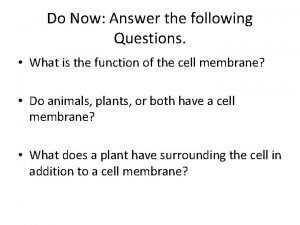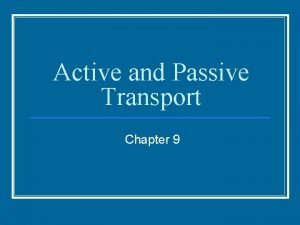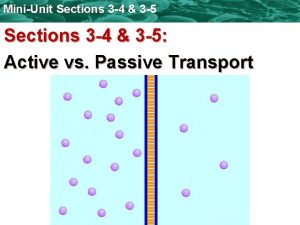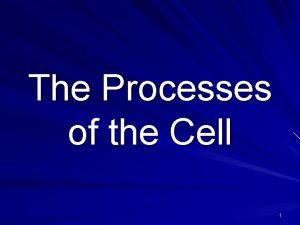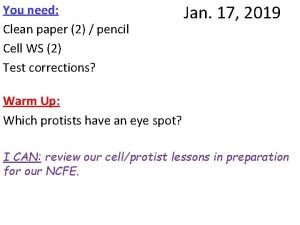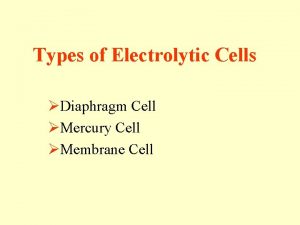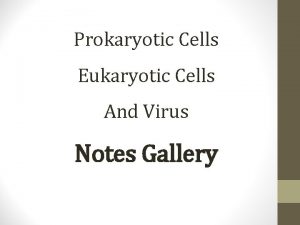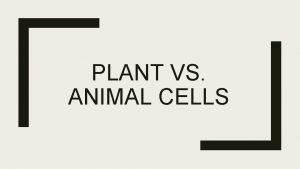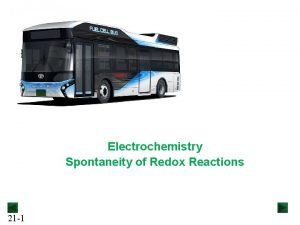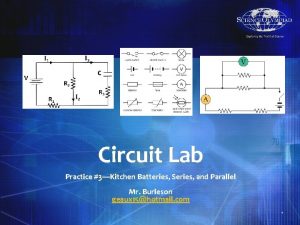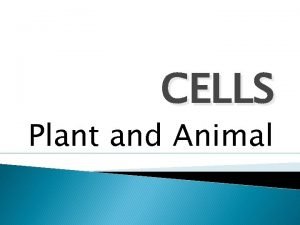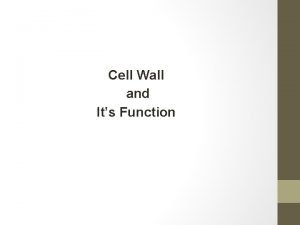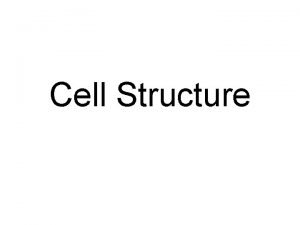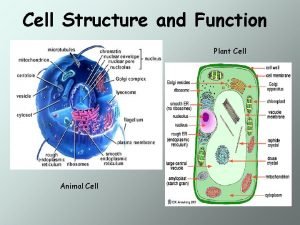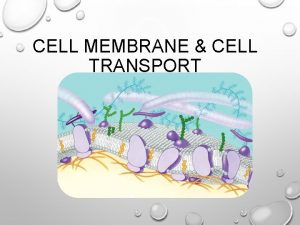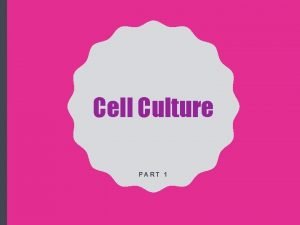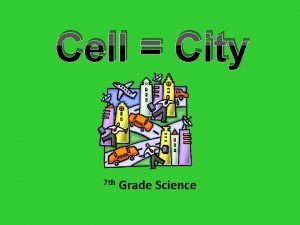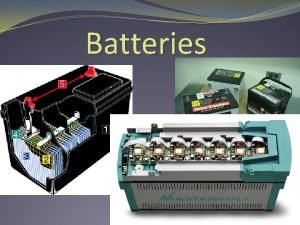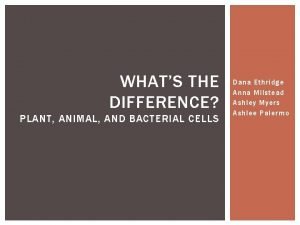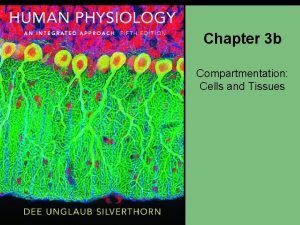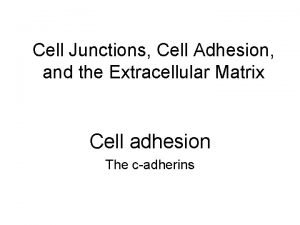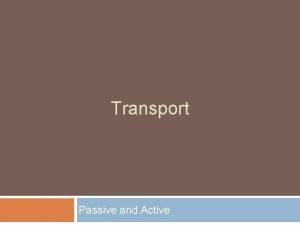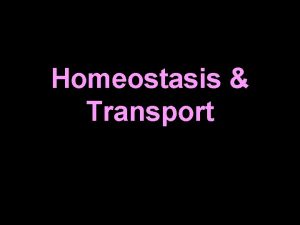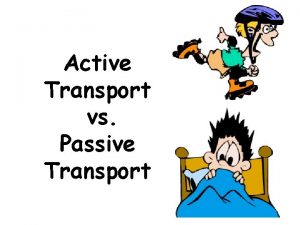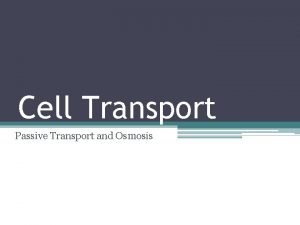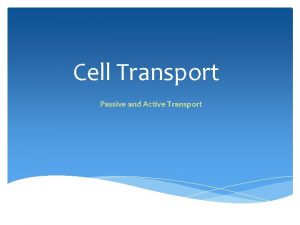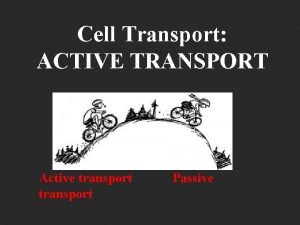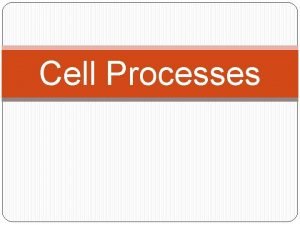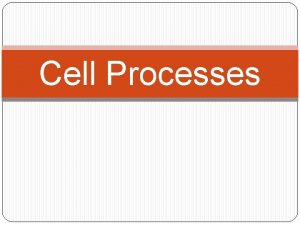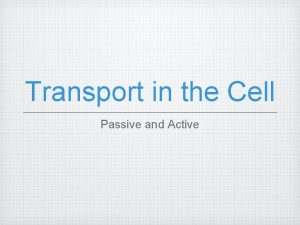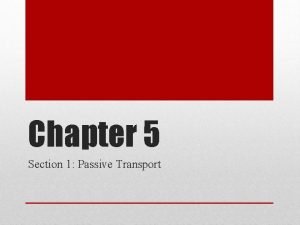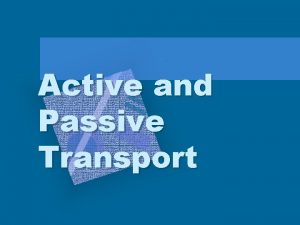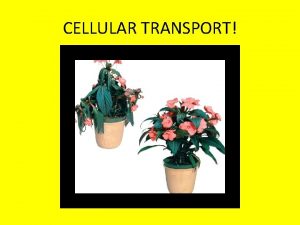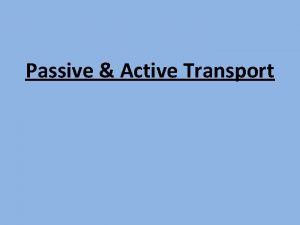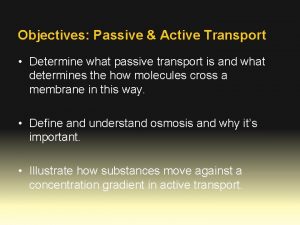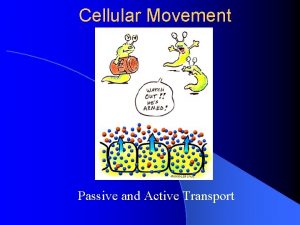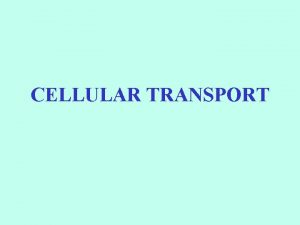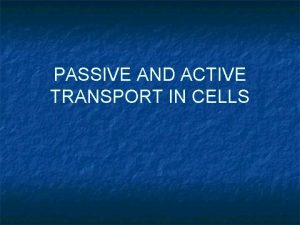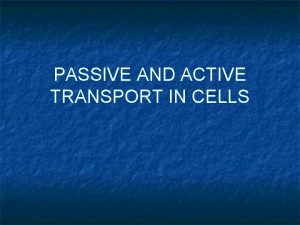Passive Transport Passive Transport Passive transport Cell spends
























- Slides: 24

Passive Transport

Passive Transport • Passive transport: Cell spends no energy (ATP) to move molecules Does this kayaker need to spend his energy in order to move?

Passive Transport • Passive transport: Cell expends no energy (ATP) to move the molecules • Molecules move from a high to low concentration – Down their concentration gradient • Examples: o Diffusion o Osmosis o Facilitated diffusion

• Diffusion: Movement of molecules from an area of high to low concentration • Movement continues until equilibrium is reached – Equilibrium: even balance of molecules • This is how many molecules move into and out of cells

O 2 O 2 O 2 Will oxygen mostly enter or exit this cell? O 2 O 2 O 2 • Diffusion: Movement of molecules from an area of high to low concentration • Movement continues until equilibrium is reached – Equilibrium: even balance of molecules • This is how many molecules move into and out of cells

Diffusion Video Clip

The woman inhales a breath of oxygen

The oxygen spreads into the womans lungs

The oxygen fills the air sacs (alveoli) located in her lungs

Where is the HIGH oxygen concentration? Where is the LOW oxygen concentration? Due to diffusion, the oxygen will spread from her lungs… into her blood

The heart pumps this oxygen-rich blood around her body

Cell X needs oxygen just like all cells. But cell X is not in direct contact with the blood and oxygen. So how does cell X get oxygen?

Diffusion: movement of molecules from a high to low concentration Where is the HIGH oxygen concentration? Where is the LOW oxygen concentration? Cell X (and all other cells) gets oxygen through the process of diffusion!

The reverse process is true w/ carbon dioxide. Over time, CO 2 waste builds up in cells. Too much is fatal. It must be removed.

Where is the HIGH carbon dioxide concentration? Where is the LOW carbon dioxide concentration? CO 2 diffuses from the cells (high concentration) and into the blood stream (low concentration)

The heart pumps the CO 2 rich blood back to the lungs.

Where is the HIGH carbon dioxide concentration? CO 2 diffuses into the air sacs (alveoli)

The woman begins to exhale

The diaphragm muscle pushes the CO 2 out of the lungs

CO 2 is expelled… the process repeats with every breath!

Facilitated Diffusion glucose Protein channel • Facilitate means “to help” glucose • Defined: Larger molecules enter/exit with the help of protein channels in the plasma membrane • No energy (ATP) used

Facilitated Diffusion

Recap 1) In which direction does diffusion occur? 2) Across which part of the cell does diffusion mostly occur? 3) Which molecule of energy is not required during passive transport? 4) True or False: More solutes creates less concentrated water. 5) Which chemical is involved in osmosis? 6) Examine the picture. If the dots are solutes, where is the high solute concentration? 7) Examine the picture. If the dots are water molecules, where is the low water concentration? 8) Examine the picture. If the dots are water molecules, which way will osmosis occur? 9) Examine the picture. If the dots are solute molecules, which way will osmosis occur?

Recap 10) Place the steps of oxygen flow in the correct order from start to finish. A – Oxygen diffuses into your cells B – Your heart pumps oxygen-rich blood around your body C – Oxygen moves into your lungs D – Oxygen gas is inhaled E – Oxygen diffuses from your lungs into your blood 11) Place the steps of CO 2 flow in the correct order from start to finish. A – Your heart pumps CO 2 -rich blood towards your lungs B – CO 2 waste is created by every cell C – CO 2 is pushed out of your lungs and out of your mouth D – CO 2 diffuses from your blood into your lungs E – CO 2 diffuses from your cells into your blood
 Passive transport vs active transport venn diagram
Passive transport vs active transport venn diagram Passive transport vs active transport venn diagram
Passive transport vs active transport venn diagram Unlike passive transport, active transport requires
Unlike passive transport, active transport requires Active transport diagram
Active transport diagram Trevor spends 45 minutes
Trevor spends 45 minutes He spends little money
He spends little money Golgi body school analogy
Golgi body school analogy Advantages and disadvantages of diaphragm cell process
Advantages and disadvantages of diaphragm cell process Site:slidetodoc.com
Site:slidetodoc.com Linear chromosomes in eukaryotes
Linear chromosomes in eukaryotes Venn diagram plant and animal cell
Venn diagram plant and animal cell Concentration cell
Concentration cell Dry cell vs wet cell
Dry cell vs wet cell Plant cell animal cell venn diagram
Plant cell animal cell venn diagram Function of the cell wall
Function of the cell wall Tonoplast
Tonoplast Function of vacuole in plant cell
Function of vacuole in plant cell Carbohydrate in cell membrane
Carbohydrate in cell membrane 10 cm dish surface area
10 cm dish surface area Cell line vs cell strain
Cell line vs cell strain Cell city project animal cell
Cell city project animal cell Lead acid battery primary or secondary
Lead acid battery primary or secondary Difference between plant and animal cell
Difference between plant and animal cell Cell-cell junction
Cell-cell junction Cell-cell junction
Cell-cell junction
